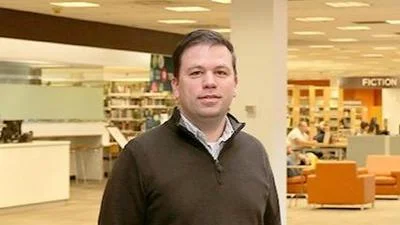Village of Northbrook Plan Commission met Jan. 21.
Here is the minutes provided by the commission:
1. CALL TO ORDER
| Attendee Name | Title | Status | Arrived |
| Steven Elisco | Commissioner | Present | |
| Jeff Sandler | Commissioner | Present | |
| Jeremy Melnick | Commissioner | Present | |
| Mark DeBartolo | Commissioner | Present | |
| Jennifer Lawrence | Commissioner | Present | |
| Ihab Riad | Commissioner | Present | |
| Allen Morgen | Commissioner | Present | |
| Marcia Franklin | Chairman | Present |
Approved - Unanimously
3. COMMUNITY PLANNING REPORT
Tom Poupard reported the bus terminal facility on Shermer Road was approved. The Board did review the new traffic plan information. The two school districts submitted letters regarding school bus prices. A preliminary application was reviewed for a music school which is part of the School of Rock franchise in White Plains shopping center. The school would be more than 2500 sq. ft. so a special permit is required.
During the next Board meeting two new preliminary applications will be discussed. Underwriters Laboratory wants a sign higher than 20 ft. facing the Edens Spur on a building. This requires a special permit for height. We also have the first request in for a cannabis growing facility in Sky Harbor.
The Board authorized two downtown studies that are starting to kick off. One of the studies will look at road conditions and parking on Cedar Lane in front of the library and Village Hall. The goal is to make it safe for people to cross the street. We will also be looking to see if we can narrow the lanes on South Shermer Road to include bike lanes. Also, a design study is being performed to study Meadow Road from Walters Avenue, north to the river. The Board is interested in exploring opportunities to make it a multi-use road. This will help improve walkability, cycling and parking in the downtown. Looking at ways to improve the pedestrian connection through the Village Hall campus to the train station. Finally, the Board authorized the Planning staff to prepare a request for proposals for a climate action plan for the community.
I response to a question, Director Poupard stated that the Board has concluded that it is not cost effective to move the train station and what the Village should do with the Grainger Property will be further discussed by the Board at an upcoming executive session.
4. HEAR FROM THE AUDIENCE
None.
5. OLD BUSINESS
None.
6. NEWBUSINESS
A. Plan Commission Workshop on Affordable Housing Ordinance
Tom Poupard gave a presentation regarding Affordable Housing Options for Northbrook. He discussed how the Board completed its initial review of Affordable Housing Options last Tuesday, January 14th. During that meeting, the Board directed the Plan Commission to work with staff to develop an initial set of recommendations of affordable housing and the definition of family. Those recommendations would come back to the Board before the Plan Commission holds public hearings on the Zoning Code amendments
Director Poupard noted that he does not want to get too deep into issue of how to define “family” this evening since the Village Attorney is not present.
Chairman Franklin asked if the Board and Plan Commission would have a joint meeting to discuss the amendments. Director Poupard said that this was not discussed, but the issue is so important and complex that it may be worthwhile to do so.
Director Poupard provide a summary of the State Affordable Housing Act and the Village’s adoption of its Affordable Housing Plan in response to the Act. He stated Northbrook has taken the position that we are exempt from the requirements of the Act since we are a home rule community. He further explained the income limits per household to qualify for Affordable Housing.
Chairman Franklin asked what geographic area is used to determine Area Median Income (AMI) and if it changes yearly. Mr. Poupard replied AMI is based on the entire Chicago metropolitan area. The data is based on Census Bureau information, which provides estimates every three years in addition to the 10-year census. He further explained that median income for families is determined by household size and is not perfect information.
Mr. Poupard replied we must use the state numbers for the Chicago metro area if we want to measure ourselves against other communities and comply with state objectives to have all communities have at least 10% of their housing stock “affordable”.
Mr. Poupard continued explaining that the Village adopted the Affordable Housing Plan in March 2005. The goal is to have 15% of all new housing units be affordable; or increase the overall supply of affordable housing units in the Village by 3%. The plan also identified 7 areas to accommodate new affordable housing developments. A comprehensive plan was adopted in 2010. The plan helps recognize the issue but does not outline a strategy for addressing the need. He further discussed the new elements in the zoning code to encourage affordable housing. One of the elements improved was the zoning code for R7 and R8, to encourage affordable housing by increasing density and floor area ratio for multi-family. Also, for senior housing 10% of the units must be affordable. For the VGRC district they included a provision for a 25% density bonus if affordable housing is included. Ultimately, it will be the Board's decision to determine what is considered affordable. Currently, no developers have requested this to increase density. After the Affordable Act was adopted, the Northbrook's housing stock data for affordable housing was 5.30% in 2007, 4.40% in 2013 and 5.70% in 2018.
Director Poupard displayed a series of charts and maps depicting housing conditions in Northbrook and surrounding communities. He noted that based on the State’s latest estimate Northbrook has 5.7% of its housing “affordable to Chicago area residents. He explained how that had climbed slightly over time. He wanted to show the affordable percentages of other nearby communities - some higher and some lower. Different communities have different housing stocks and different demographics.
A question was asked if the Village is changing its position that we are exempt from the requirements because we are home rule. Mr. Poupard replied no we are not changing our position. We are however, saying that this is something we should do - not something we must do
Member Riad asked if we know the median salaries and where they live for people that work in the police department, fire department and teachers. Mr. Poupard replied we can pull data regarding salaries of Village employees and he had gathered data on school district 28 employees and will see if he can gather more information for the next meeting. He further explained the real estate community tends to focus on delivering luxury units which most families cannot afford. This is a national issue, not unique to Northbrook. This negatively affects families and they struggle to find affordable housing due to limited availability.
Director Poupard then described tear down activity and how a demolition fee could work. The number of new single family homes built each year has dropped. Overall, we are seeing half annual tear down activity.
He then described what some of the affordable units in Northbrook look like - smaller single family homes that are often “tear downs” and older condominiums. Mr. Poupard performed a search on realtor.com to determine where our affordable housing is located. The results showed mostly older condominiums built in the 70s with one or two-bedroom units available. One of the things the Board took away from this is to find a way not to lose our affordable housing stock.
A tool was created called an Affordable Housing Trust Fund. The trust will allow the community to purchase a condominium or single-family homes to be rented or sold with strict deed restrictions to a qualifying family.
Director Poupard described how the village is allowing more diverse housing options by approving a lot more multi-family developments since 2000.
The policy direction from the Board is to use the Highland Park Ordinance as a model to start an inclusionary zoning standard, create a Housing Trust Fund and use a demolition fee to provide an alternate funding source. The trust may also be used to help seniors with home repairs they can’t afford. People who own an affordable home must either sell it to another qualifying affordable home buyer or back to the Affordable Housing Trust Fund. In a price-controlled unit most of the equity built goes toward paying off the mortgage.
A question was asked what would stop the Village from developing another Crestwood Place which is geared toward seniors. What is stopping the Village from doing a similar project that is not for seniors? Member Elisco described how Crestwood had been built and its limitations for expansion. Mr. Poupard added that trust fund money could be used to build a new facility too - or help subsidize a new development by a private or not-for-profit group. He added that it is possible that a portion of the Grainger property could be used for a 100% affordable project. The Village has come a long way in a relatively short amount of time to try and grapple with this problem.
A member asked if increasing the density and floor area ratio in order to split a unit into two units is realistic. Mr. Poupard replied it can work and has some images; however, the developer has to be a partner in the decision to do this. Realistically, the profit is taken out the affordable units.
Mr. Poupard continued with the Affordable Housing Trust Fund details. Currently there is a waiting list at Crestwood. They have been talking with a group, Community Partners for Affordable Housing (CPAH) who is used by Highland Park and other communities to perform the screening of applicants to determine eligibility of candidates.
He added that under the Highland Park approach, individuals in multi-unit buildings who occupy the affordable units receive the same benefits as the other occupants such as parking, storage and amenities. Interior finishes may be less expensive.
Director Poupard showed some examples of smaller affordable projects constructed in Highland Park and Glenview and explained they were well-designed and properly maintained. These are keys to making the developments fit in the community and be successful.
Chairman Franklin observed that millennials do work in the suburbs and the data shows they are not buying, but renting.
Director Poupard walked through how the affordable housing mix was implemented in a new development in Highland Park. Ultimately, the approved project had a mix of affordable units provided on-site and a fee paid for units not built. He said the community really needs to work with the developer to come up with a solution that makes sense. The Highland Park ordinance has recently been amended to reflect their practice of making some compromises.
Mr. Poupard noted the Deerfield development was also recently approved. It will consist of 246 units, 186 apartments, townhomes that will be rentals. They do not have an inclusionary housing requirement. Instead, they came up with a negotiated approach. There will be 18 affordable housing units. The income limits for the affordable units is set at 120% of area median income - higher than Highland Park. The agreement also stipulated the units only must be affordable for 25 years. In Highland Park, it is in perpetuity.
Director Poupard said he would return with more information at the next meeting. The Commission thanked him for the information.
A. Plan Commission Workshop on Affordable Housing Ordinance
Tom Poupard gave a presentation regarding Affordable Housing Options for Northbrook. He discussed how the Board completed its initial review of Affordable Housing Options. He stated Northbrook took position as exempt, as a home rule community. He further explained the income limits per house hold to qualify for Affordable Housing.
Unknown Speaker 00:22:30 asked if the area median income is the index that is used for calculation and if it changes yearly. Mr. Poupard replied yes, it is correct and is reported every two or three years. He further explained the median income for families is determined by household.
Unknown Speaker 00:23:58 unable to hear audio. Mr. Poupard replied we must use the state numbers If we want to comply with state objectives.
Unknown Speaker 00:24:13 asked if we are still maintaining and not changing our position from exempt. Mr. Poupard replied no we are not. Unknown Speaker 00:24:13 replied Northbrook's objective is to set their own standards that might not mirror the state standard.
Unknown Speaker 00:24:40 asked if we know the median salaries for people that work in the police department, fire department and teachers. Mr. Poupard replied we can pull data regarding median salaries. He further explained the real estate community caters to delivering luxury units which families cannot afford. This negatively affects families and they struggle to find affordable housing due to limited availability.
Mr. Poupard continued explaining that the Village adopted the Affordable Housing Plan in March 2005. The goal is to have 15% of all new housing units be affordable; or increase the overall supply of affordable housing units in the Village by 3%. The plan also identified 7 areas to accommodate new affordable housing developments. A comprehensive plan was adopted in 2010. The plan helps recognized the issue but does not outline a strategy for addressing the need. He further discussed the new elements in the zoning code to encourage affordable housing. One of the elements improved was the zoning code for R7 and R8, to encourage affordable housing by increasing density and floor area ratio for multi-family. Also, for senior housing 10% of the units must be affordable. For the VGRC district they included a provision for a 25% density bonus if affordable housing is included. Ultimately, it will be the Board's decision to determine what is considered affordable. Currently, no developers have requested this to increase density. After the Affordable Act was adopted, the Northbrook's housing stock data for affordable housing was 5.30% in 2007, 4.40% in 2013 and 5.70% in 2018.
Unknown Speaker 00:33:36 questioned how the lodge came in at the lowest number. Mr. Poupard replied how an analysis relying on census data or samples from the census Bureau are not accurate. He noticed people tend to understate their income and home value which effects the data analysis.
Mr. Poupard continued with the Affordable Housing availability data. From Northbrook to the East it is difficult to find affordable housing. Looking at the Northbrook Market Data, home prices are higher now then what they were in the past. For the entire Chicago area, home prices are pretty flat right now, no one has seen great increases in home value. The number of single family homes has dropped significantly. Overall, we are seeing half annual tear down activity. Mr. Poupard performed a search on realtor.com to determine where our affordable housing is located. The results showed mostly older condominiums built in the 70s with one or two-bedroom units available. One of the things the Board took away from this is to find a way not to lose our affordable housing stock. A tool was created called an Affordable Housing Trust Fund. The trust will allow the community to purchase a condominium or single-family homes to be rented or sold with strict deed restrictions to a qualifying family. The village is allowing more diverse housing options by approving a lot more family developments since 2000. Since 2000, 122 new lots have been created. The policy direction from the Board is to use the Highland Park Ordinance as a model to start an inclusionary zoning standard, create a Housing Trust Fund and use a demolition fee to provide an alternate funding source. The trust may also be used to help seniors with home repairs they can’t afford. People who own an affordable home must either sell it to another qualifying affordable home buyer or back to the Affordable Housing Trust Fund. In a price-controlled unit most of the equity built goes toward paying off the mortgage.
Unknown Speaker 01:10:21 asked what would stop the Village if we developed the trust. The Village owns Crestwood Place which is geared toward seniors. What is stopping the City from doing a similar project that is not for seniors? Unknown Speaker 01:10:40 unable to hear audio replied. Mr. Poupard replied yes that is correct.
Unknown Speaker 01:13:26 asked if increasing the lot size of the floor area ratio to be split into two units is realist and provides more ratio. Mr. Poupard replied it can work and has images. Realistically the profit is taken out the units. Unknown Speaker 01:14:09 stated that cutting down the ratio of square footage to create more units can cause more density in the neighborhoods and schools.
Mr. Poupard continued with the Affordable Housing Trust Fund details. Currently there is a waiting list. They have a vendor CEPA who performs the screening of applicants to determine eligibility of candidates. Individuals who occupy the affordable units receive the same benefits as the other occupants such as parking, storage and amenities.
Unknown Speaker 01:23:33 stated the majority of Millennial' s work in the suburbs and the data shows they are not buying but renting.
Mr. Poupard noted the Deerfield development was recently approved. It will consist of 246 units, 186 apartments, and all town homes will be rentals. They do not have an inclusionary housing requirement. There will be 18 affordable housing units. The income is set at 120% median income. The agreement also stipulated the units only must be affordable for 25 years. Currently the demolition activity has decreased in the number of tear downs. Demolition can have a negative impact by decreasing the availability of housing stock. Currently there is a demolition permit fee assessed and the profits will be used to help fund the Affordable Housing Trust Fund.
7. ADJOURN
On voice vote, a motion to adjourn passed unanimously. Adjourned at 9:30 p.m.
http://northbrookil.iqm2.com/Citizens/FileOpen.aspx?Type=15&ID=1464&Inline=True






 Alerts Sign-up
Alerts Sign-up